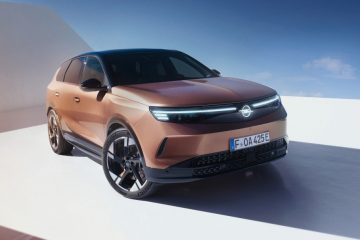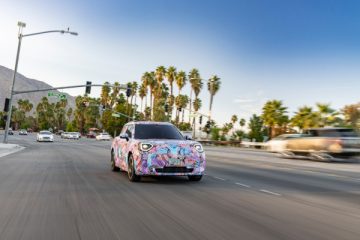![]() for Traffic Congestion With the Goal to Prevent Traffic Jams
for Traffic Congestion With the Goal to Prevent Traffic Jams
Public-road Testing to Begin in May 2012
Honda Motor Co., Ltd. today announced the successful development of the world’s first*1 technology, to detect the potential for traffic congestion and determine whether the driving pattern of the vehicle is likely to create traffic jams. Honda developed this technology while recognizing that the acceleration and deceleration behaviour of one vehicle influences the traffic pattern of trailing vehicles and can trigger traffic congestion.
In conjunction with the Research Centre for Advanced Science and Technology at the University of Tokyo, Honda conducted experimental testing of a system utilizing the technology to detect the potential for traffic congestion. The test results demonstrated that the system helped increase the average speed by approximately 23% and improved fuel efficiency by approximately 8% of trailing vehicles.
With the goal to bring this technology to market, Honda will begin the first public-road testing of the technology in Italy and Indonesia in May and July of this year, respectively, to verify the effectiveness of the technology in minimizing vehicle congestion.
 Rather than providing information to help the driver avoid existing congestion based on current traffic information, the system monitors the acceleration and deceleration patterns of the vehicle to determine whether the driver’s driving pattern is likely to create traffic congestion. Based on this determination, the system provides the driver with appropriate information, including a colour-coded display through the on-board terminal, to encourage smooth driving which will help alleviate the intensity of acceleration and deceleration by trailing vehicles, thereby helping to prevent or minimize the occurrence of vehicle congestion.
Rather than providing information to help the driver avoid existing congestion based on current traffic information, the system monitors the acceleration and deceleration patterns of the vehicle to determine whether the driver’s driving pattern is likely to create traffic congestion. Based on this determination, the system provides the driver with appropriate information, including a colour-coded display through the on-board terminal, to encourage smooth driving which will help alleviate the intensity of acceleration and deceleration by trailing vehicles, thereby helping to prevent or minimize the occurrence of vehicle congestion.
Moreover, the positive effect on minimizing congestion and fuel efficiency improvement can be further increased*4 by connecting the on-board terminals to cloud*2 servers to make the driver aware of and in sync with the driving patterns of vehicles ahead by activating the ACC (Adaptive Cruise Control)*3 system at the right time to maintain a constant distance between vehicles at the most appropriate interval.
Traffic congestion causes not only a delay in arrival time but also an increase in CO2 emissions and a higher potential for rear-end collisions. Striving to realize "the joy and freedom of mobility" and "a sustainable society where people can enjoy life," as stated in the Honda Environmental Vision, Honda will work toward the establishment of a congestion-free mobility society all around the world.
Editors’ Notes
*1 Based on Honda research (as of the end of April 2012)
*2 Short for cloud computing, which enables software and data required by services to be accessed via the Internet (or equivalent network) rather than from a local computer.
*3 Adaptive Cruise Control is designed to enhance the driving experience by reducing the burdens on the driver. ACC monitors vehicle speed and inter-vehicle distance using a millimeter-wave radar mounted in the front grille, which scans the road for other vehicles and calculates the distance from the vehicle directly in front. The system maintains the selected speed and distance (as designated by the driver) based on data supplied by the radar.
*4 Additional 16% increase in the average speed of trailing vehicles and additional 5% improvement in fuel efficiency compared to the results of the experiment using the system without cloud and ACC.




